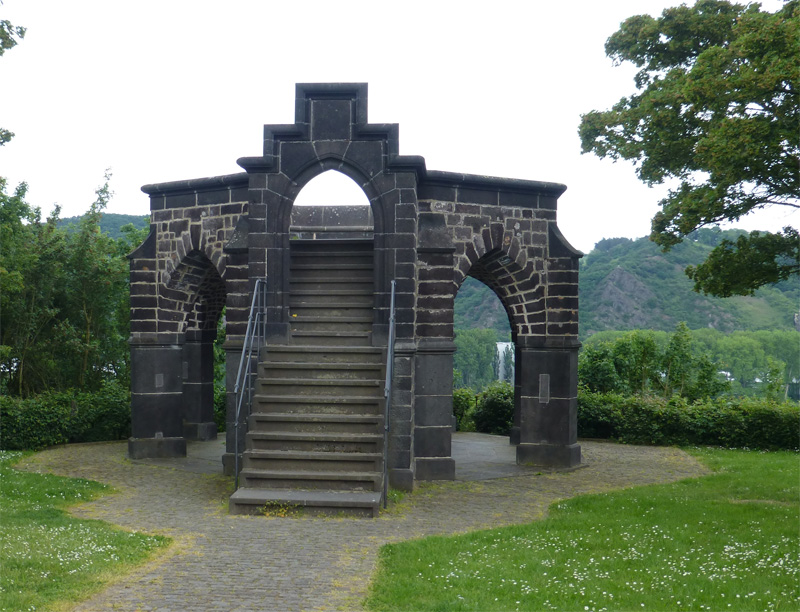| |
IIt was in a nut grove
above the Rhine in
the vicinity of Rhens at the quadripoint of their territories where the
Rhenish electors, the archbishops of Cologne,
Trier and Mainz and the Count Palatine of the Rhine met
for the first time in 1273 to arrange for the election of Rudolf I von
Habsburg to be the next King of the Romans. In 1308 they conferred
at the same place to bestow the kingship on Henri VII. of Luxemburg, candidate of Trier
and Mainz. Following his death in 1314 the electors
agreed on the election of future Roman kings in Frankfurt. In 1338 six of the
seven electors constituted the so-called Kurverein von Rhens
(elector's assembly of Rhens). The assembly decreed that their elected
King (in thís exemplary case Ludwig IV of Bavaria) could do without the
Pope's official blessing. When Ludwig annoyed the electors by neglecting
there right to be heard they eventually proclaimed Karl IV as king in
1346. (Being elected not only in opposition to Ludwig but also in a
'wrong place', Karl was properly re-elected in Frankfurt after Ludwig's death in 1349.) In 1376
the assembly agreed on Karl's son Wenzel as his successor. Having broken his
promise for the election to take place at the Königsstuhl, the King
indued a permanent building on the site, to be built by the people of Rhens,
who were rewarded with a custom's privilege for its construction
and maintenance.
After Wenzel had been deposed on august 20, 1400, his successor Ruprecht von der
Pfalz was elected in Rhens the following day, thus being the second king
elected at the Königsstuhl. Although the following elections were to take
place in Frankfurt, three Kings, Sigismund (1414), Friedrich III (1442),
and Maximilian I (1482) still stopped by in Rhens on route to
the ceremonial coronation
in Aachen. They ascended the Königsstuhl to show respect to the people
and in honour of their predecessors on the throne.
In 1808 the building
was demolished under French occupation to make room for a new
road. To commemorate its historical value, a group of notables committed
itself to the reconstruction of a similar building in its present form not far from the
original site in 1840. |
|
